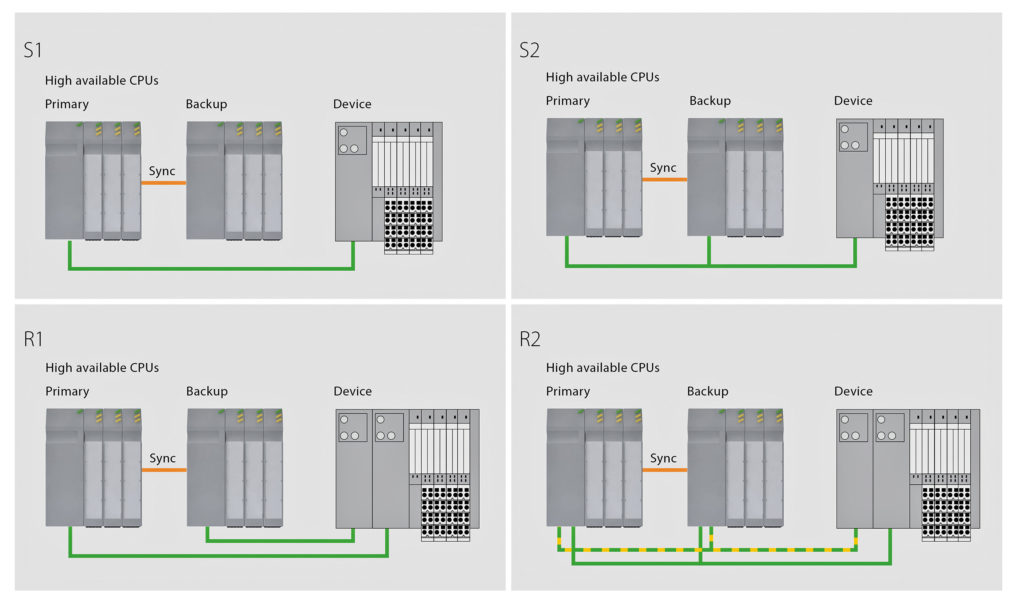PROFINET has become the leading communication standard in factory automation. The number of users is increasing rapidly, as machine builders appreciate PROFINET’s powerful real-time transmission capabilities. The technology gives flexibility in the design of network structures. PROFINET is also expected to experience further tangible growth in process automation. This area, however, has some special requirements which controllers and field devices have to fulfill.
Protecting plants in the process industry from downtimes involves considerable effort. Compared to factory automation, where the focus is on higher unit quantities and shorter cycle times, the interruption of a continuous production process can lead to enormous financial losses. Furthermore, the handling of hazardous liquid or gaseous substances involves the observance of strict safety precautions –particularly in areas provided with explosion protection. As a preventative measure, companies therefore firstly invest in the safeguarding of potential ignition sources and secondly in a high availability system architecture. Controllers and I/O modules in the field are normally provided with redundancy in order to ensure safe plant operation. If one device or connection fails, the otherwise inactive backup solution is activated. Planners implement these complex or limited redundant systems in accordance with the relevant requirements –both on the physical device level as well as in the underlying programming logic.
Turck’s contribution to PROFINET integration in the world of high availability systems extensively increases the functionality of fieldbus products to support S2 system redundancy. Last month, Turck presented the TBEN-L5-8IOL at the Hannover Messe as its first IO-Link master module in IP67 that supports S2 system redundancy*. The master establishes a logical communication relation to more than one controller and combines high availability with a wide range of potential uses through IO-Link in the field.
S2 System Redundancy Preferred
Four PROFINET system redundancy configurations have been defined by PROFIBUS & PROFINET International (PI): S1, S2, R1, and R2. The terminology used here is based on a gradation that reflects the degree of fail safety that an automation system is to provide. No redundancy is implemented (S1) if a controller and field device only communicate via a single connection. However, if a PROFINET device supports communication relations to the primary controller as well as its backup via this single connection, this is classified as S2. In the event that the main controller fails, a bumpless switching to its physical twin is performed. For this, the I/O system and I/O module in the field must maintain this logical dual connection to two entirely spatially separated controllers. These S2 solutions meet the requirements of many applications and are preferred in practical applications.
Very high and maximum availability can only be achieved with R1 or R2 system redundancy. This involves the additional implementation on a field device of a redundant communication interface and is often used in conjunction with remote I/O. R2 with its four-way connection represents the highest level of complexity. Each of the two communication interfaces of a device here can establish communication relations to the main controller and to its redundant copy. This crosswise protection from failures is less common.

High Availability to the Field
Siemens initiated the PROFINET implementation of redundancy and designed its controller systems to support redundant infrastructures. PROFINET devices had previously not provided support for S2 system redundancy. Turck is now responding to this demand with an extensive expansion of functions. Turck’s IO-Link master module that supports S2 system redundancy will soon be deployed in the USA in the plant of a biopharmaceutical manufacturer, which in the future will manage its production with PROFINET system redundancy and IO-Link. High availability is essential in the sector for the handling of most sensitive and cost-intensive products.
* The subject of redundancy has been discussed in the context of PROFINET for several years. However, two types must be distinguished here. The media redundancy that has been available for a long time – referred to as MRP – describes a connection between controller and PROFINET device via a ring topology. All systems are simply provided once, however, plant operation in the event of a failure on one route is ensured by the spare route of the ring. System redundancy, on the other hand, refers to multiple communication relations between controller and PROFINET module, which does not require an expansion of physical connections. With S2 system redundancy, the controller level is designed with redundancy by the addition of a backup controller.
